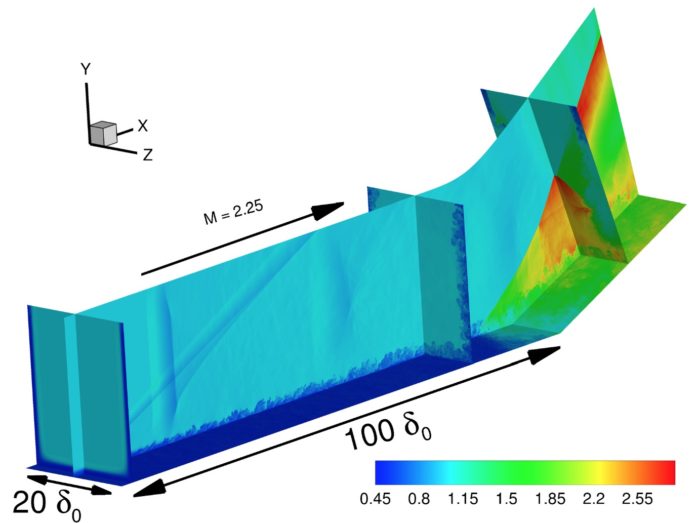Avionics’ frontier is supersonic. The military is looking for ever-faster aircraft that can fly five times the speed of sound. Fifteen years after the Concorde’s last transoceanic flight, Japan Airlines and the Virgin Group are putting resources into planes that could cut abroad travel time by the greater part.
In any case, supersonic speeds bring a huge number of configuration challenges. For a certain thing, precarious air-flow patterns can produce aircraft harming shock waves. Even if putting the safety first, engineers need to keep structures as light as possible to maintain energy efficiency that cuts fuel costs.
In order to understand the causes behind these erratic flows, scientists are modeling different strategies for preventing or eliminating them. With support from the U.S. Department of Energy’s (DOE) INCITE program (Innovative and Novel Computational Impact on Theory and Experiment), scientists have tackled these turbulent systems. Their INCITE allocation includes 200 million processor hours on the Mira IBM Blue Gene/Q supercomputer at Argonne Leadership Computing Facility, a DOE Office of Science user facility.
Jonathan Poggie, an associate professor with Purdue University’s School of Aeronautics and Astronautics said, “As an airplane wing moves through the atmosphere, gases flow around it. When air movement is smooth around the plane’s contours, it’s called attached flow. Drag is low and the craft is easy to control.”
“But aircraft can undergo separated flow, particularly at supersonic speeds. This happens when air moving along the surface detaches and forms a vortex, a complicated, unsteady three-dimensional flow pattern. These fluctuations sometimes occur at a low frequency that can resonate with aircraft panels. Supersonic speeds can generate shock waves that repeatedly hammer an airplane’s structure. There’s a very serious problem when you get this type of separation in that it causes incredible flow fluctuations.”
Like other fluid-dynamics problems, separation unsteadiness presents big computational challenges. Tiny turbulent eddies might measure fractions of a millimeter and last only thousandths of a second while aircraft-size flow structures – up to 10 meters – might last a second or more. To fully capture turbulence, they need to capture both scales.
As the proportions increase, computational intensity also grows. Calculating turbulence on a lab bench might require only a desktop computer. Move up to a 747, Poggie says, and it was impossible until recently to resolve all the scales.
Scientists primarily modeled a great separation case, utilizing a ramp-like structure with a direct grade and a territory taking after a wing fold. The reproduction offered a correlation with wind burrow explores that test streams around a plane wing.
To handle the issue, the group initially needed to improve algorithms to proficiently deal with substantial amounts of data in parallel on numerous processors. They were managing terabytes of information as opposed to gigabytes.
Utilizing a new code, scientists were able to examine flow as the separation bubble moved. The reproductions uncovered examples that happen just before detachment. The low-frequency u–steadness with highlights about an indistinguishable size from the aircraft – was associated with incoming flow-related events.
But later, scientists realized that the simplified ramp also was misleading.
A wind tunnel has sides, and vortices form in the corners. Researchers had wondered if those vortices were important; they do appear to be. Such a vortex can slow the flow, even to subsonic speeds. Crossing that critical threshold alters sound-wave movement. At supersonic speeds, sound waves flow downstream only, but subsonic sound can travel upstream or downstream. That situation also creates disturbances and unsteadiness in the flow.
Poggie said, “We have developed two models of how turbulence interacts with separation unsteadiness. In one scenario the flow itself can be an oscillator, excited by fluctuations that grow. In another scenario, the flow amplifies constant incoming fluctuations but can’t oscillate on its own. It turns out that in the last few years we’ve found that there’s a combination of those two effects.”
“For amplifiers, adding disturbances would only make the situation worse. But with oscillators, they could incorporate actuators or actuator arrays to counteract the flows that excite the disturbance.”
